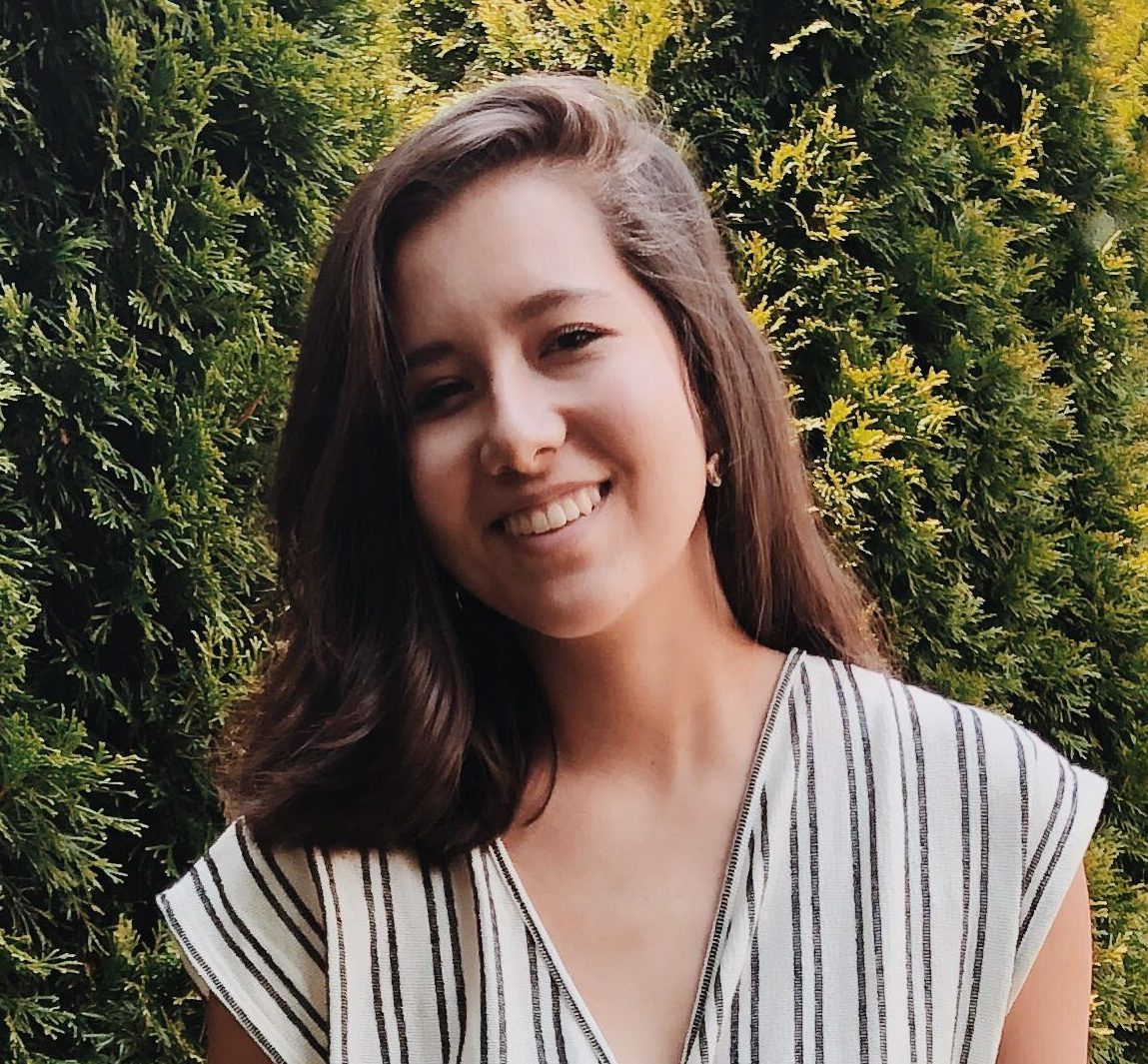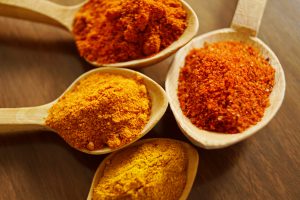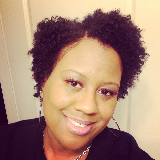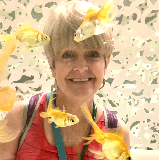I remember when her hair fell out. The curly ringlets had disappeared one by one, and then all at once. A collection of hats replaced the hairbrush on her dresser. The day she bought her new wig, I swallowed my tears and told her she looked beautiful. We sat in the cancer care waiting room of the hospital every week, the chemotherapy treatments leaving her weaker each time. At age 55, my strong, radiant mother was diagnosed with breast cancer. No family history. No previous issues. Just a shocking diagnosis in the middle of the summer that made me feel terrified for both her future and mine.
After her initial diagnosis, it seemed like cancer was appearing everywhere in my life. One of my older classmates told me she had it when she was younger and then my friend’s mother was diagnosed only a few weeks later. I became hyper-aware of the women walking by me in restaurants and malls wearing bandanas and hats. I started noticing the pink ribbons– on the backs of cars, on little jars by the grocery store register, on t-shirts. Cancer, cancer, cancer. The world was taunting me, whispering in my ear, “don’t forget this disease!”
I now know this is what’s called the Baader-Meinhof phenomenon. It’s when something you’ve recently noticed or experienced starts to pop up suddenly and seemingly everywhere in your life. It’s not the universe playing tricks on you, it’s a frequency illusion. You’re only seeing it more because now you’re noticing it.
“So this is how common breast cancer is,” I thought. I had never noticed before. One in eight women in the United States will develop breast cancer in their lifetime. The numbers were starting to make sense to me.
I’ve blurred out a lot of the memories of the year my mom had cancer. I can see myself working on puzzles with her in the waiting room, I can see myself hugging her after her surgery, buying her a knit hat for the winter, hugging her tight after her chemo sessions, crying for her when I was alone. I can’t remember anything else. My brain has done a good job of blocking it out.
After surgery and a brutal year of treatment, my mom emerged from the battle– because that’s really what it was– a shining warrior, cancer-free. She is now a part of the over 3.5 million breast cancer survivors in the U.S. alone.
October
The month of October is known across the U.S. as National Breast Cancer Awareness Month. Started in 1985 as a week-long awareness event, the goal was to bring attention to breast cancer. Now, the entire month is dedicated to pink ribbons as worldwide, national, and local organizations work to increase awareness, raise money for research, and educate people on preventative measures and early detection.
What is breast cancer?
Breast cancer is the second most common cancer affecting American women, after skin cancer. Globally, it is the most common cancer among women.
Cancer is a class of diseases where abnormal, malignant cells grow and invade healthy cells in the body. Cancerous tumors are made up of masses of these built-up cells. Breast cancer occurs when malignant cells form in breast tissues.
In order to treat cancer most effectively, doctors classify cancer in five stages that categorize the size and spread of cancer in the body. This labeling system helps determine patient treatment, outlook, and research.
Stage 0: In this stage, there is no cancer, but abnormal cells with the potential of becoming cancer exist.
Stage I: In this stage, the cancer is small and localized to only one area. This stage is also known as early-stage cancer.
Stage II and III: In these stages, the cancer is larger and has grown into nearby tissues or lymph nodes.
Stage IV: In this stage, cancer has grown to other parts of the body. This stage is also known as advanced or metastatic cancer.
There are many different types of breast cancer. They can be categorized as either non-invasive or invasive cancers. Non-invasive cancers stay within the milk ducts or lobules in the breast and do not grow into normal tissue within or beyond the breast. Invasive cancers, which include most breast cancers, grow into normal healthy tissues. Treatment plans are created based on the cancer’s pathology.
Below is a list of common types of breast cancer.
• Ductal Carcinoma In Situ (DCIS)
• Lobular Carcinoma In Situ (LCIS)
• Invasive Ductal Carcinoma (IDC)
• Invasive Lobular Carcinoma (ILC)
• Inflammatory Breast Cancer
• Recurrent and/or Metastatic Breast Cancer
Symptoms
Many breast cancers don’t have obvious symptoms; however, it is essential to be aware of common symptoms. They include:
• A lump or thickening of tissue on the breast or in the underarm area
• Change in size, shape or appearance of a breast
• Changes to the skin over the breast or nipple (like peeling, redness, flaking, dimpling etc.)
• A newly inverted nipple
• Swelling or pain in the breast
• Nipple discharge
More often than not, these symptoms aren’t due to cancer, but symptoms should be shared with your doctor to rule out breast cancer. Staying proactive helps in early detection.
Common myths
One goal of breast cancer awareness month is to educate the public on breast cancer and its prevalence across the country. This also means debunking common myths that people tend to believe. Below are some myths that spread misinformation about breast cancer.
- “Only women are affected by breast cancer, men can’t get it.” Though much less common in men, breast cancer does affect men. About 2,000 men are diagnosed each year and their mortality rate is higher because of late detection due to less awareness and the assumption that a lump won’t be breast cancer.
- “Finding a lump in your breast means it is cancer.” It’s important to perform self check ups and see a doctor if a persistent lump exists. However, finding a lump doesn’t necessarily mean it is cancerous. Only a small percentage of lumps end up being cancer.
- “A family history of breast cancer means you are more likely to develop breast cancer.” Only about 10% of individuals diagnosed with breast cancer have a family history, but those who do have a family history are in a higher risk group.
- “Using underarm antiperspirant/deodorant can cause breast cancer.” There is no evidence of a link between underarm antiperspirant and breast cancer, but the safety of the chemicals in antiperspirant is still being studied.
Treatment
A variety of treatment options exist for breast cancer patients. Treatment plans are usually created with a combination of treatments including surgery, chemotherapy, radiation therapy, hormonal therapy and targeted therapy. Complementary and holistic medicine practices like yoga, acupuncture, and meditation can be helpful additions to treatment as well.
Chemotherapy, perhaps the most well-known form of cancer treatment, is a systemic treatment made up of a combination of cancer-fighting drugs that travel through the bloodstream. Sometimes it is used to shrink a tumor before surgery or administered after surgery. Chemotherapy is usually administered through a course of several weeks and can be an emotionally and physically draining time for cancer patients.
Radiation therapy is a highly targeted and effective way to kill cancer cells. It uses high energy rays to destroy any leftover cancer cells left in the breast or armpit after surgery. Radiation therapy usually begins 3-4 weeks after surgery and side effects are limited to the treated area.
Hormonal therapy involves patients taking medications that lower the amount of estrogen in the body or block the action of estrogen on cancer cells, preventing the growth of estrogen-fueled cancers. About 80% of breast cancers are estrogen-receptor positive. Hormonal therapy is a systemic treatment for these cancers.
Targeted therapy includes specific medications that target specific characteristics of cancer cells. Targeted therapy is used in combination with chemotherapy, but these targeted drugs usually have less severe side effects than chemotherapy drugs and attack breast cancer cells without harming normal cells.
Risk factors
Though there is rarely ever one direct cause of breast cancer, there are certain factors that can increase your risk of breast cancer. They include:
• Eating unhealthy food
• Smoking
• Drinking alcohol
• Having a sedentary lifestyle
Cancer isn’t preventable but taking care of your body can help lower your risk. Genetic factors such as gender, age, race, family history, and personal health history are risk factors that can’t be changed but are important to take note of. Being female and growing older are the main genetic risk factors for developing breast cancer; however, women of all ages and men can get breast cancer too.
Prevention and early detection
Though you can’t prevent breast cancer, there are ways to take care of yourself, decrease your risk of later-stage cancer, and increase your survival rate.
Preventative health measures such as performing monthly breast self-exams and scheduling regular clinical breast exams and mammograms can help in early detection, increasing survival rate. If detected early in its localized stage, the 5-year survival rate for breast cancer patients is 100%. Mammograms can detect cancer before you feel a lump, but by performing self-exams, you can stay alert of any abnormalities or irregularities that may appear and catch them early.
Incorporating healthy habits such as eating healthier, exercising, and limiting alcohol consumption can reduce your risk of breast cancer.
Staying informed is key when it comes to your health. By learning more about breast cancer and sharing information with your friends and family, you can help increase breast cancer awareness not only in the month of October, but year round.
Sources
- https://www.breastcancer.org/symptoms/understand_bc/what_is_bc
- https://www.britannica.com/topic/Breast-Cancer-Awareness-Month
- https://www.mayoclinic.org/diseases-conditions/breast-cancer/symptoms-causes/syc-20352470
- https://www.nationalbreastcancer.org/breast-cancer-facts
- https://www.webmd.com/cancer/cancer-stages#1








